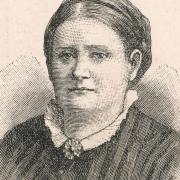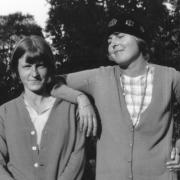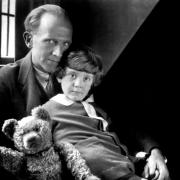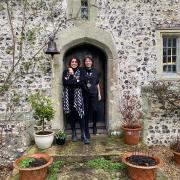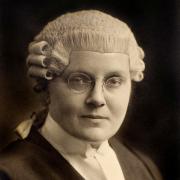Chemist Frederick Soddy discovered the isotope in 1913. Here, Ray Cavanaugh celebrates Eastbourne’s esteemed son
Eastbourne native Frederick Soddy was an esteemed chemist in 1913, when he was explaining his research to his friend, the Scottish writer-doctor Margaret Todd. He told her about certain radioactive elements that can have different atomic masses, despite having the same chemical properties. She suggested the term isotope. Soddy liked this term, which has since become a ubiquitous word in the scientific community, and the confusing bane of many a senior school student.
For his discovery of the isotope and advancements in the field of radioactivity, Soddy would become a Nobel laureate and one of the more significant scientists in the 20th century. Born at 6 Bolton Road in Eastbourne on 2 September 1877, his early formal education took place at Eastbourne College. There the science master, a recent graduate of Oxford, kindled young Soddy’s interest in the subject.
He then studied in Wales, and later at Merton College, Oxford. There he received first-class honours in Natural Science. The promising student then relocated to Quebec’s McGill University. There was good reason for the long journey; at McGill, Soddy – still only 22 years old – was able to work with one of the brightest rising stars in the scientific community: one Ernest Rutherford, the eventual godfather of the atom.
Together they conducted research and collaborated on a succession of papers involving radioactive elements and decay. In her book Radioactivity, Marjorie C. Malley writes how the new science of radioactivity was accelerated by the “enthusiasm and boundless energy of Ernest Rutherford” along with the “sharp intellect and initiative of Frederick Soddy”.
Following his time with Rutherford in Montreal, Soddy took a lecturer position at the University of Glasgow. At Glasgow, he voyaged into the strange world now known as isotopy. By 1911 Soddy had arrived at the conclusion that: “chemistry has to consider cases, in direct opposition to the principle of the Periodic Law, of complete chemical identity between elements presumably of different atomic weights”.
That chemically identical elements could have different atomic weights was a rather startling prospect, one which Soddy relayed to his friend Margaret Todd during a 1913 conversation. Todd, a classically educated writer and doctor by training then put forth a word with medical precision: “Isotope” – a combination of the ancient Greek words for “equal” and “the same place”.
Five years later, Todd, then age 58, would die in a convalescent home, leaving behind rumours of suicide. In her day, she had been an accomplished novelist. However, her entire corpus of writing has since been outshone by the one scientific term she volunteered.
It is fitting that the woman who coined the term for Soddy’s grand discovery mentions in her book how, in an often sexist era (especially so in the sciences), Soddy “believed in equality for women” and treated women as equals. In fact, he collaborated on research papers with several women, including his wife Winifred, who was an intellectual in her own right.
For both discovering isotopy and for his other radiochemical findings, the Eastbourne native was awarded the Nobel Prize for Chemistry. Though the Prize came in 1921, the Nobel website (nobelprize.org) describes 1913 as Soddy’s “peak”.
In later years, he grew less engaged in his chosen field of radioactivity. His interests began to shift to subjects outside his area of pre-eminence, and he became quite active as an author. Though the bulk of his writing is highly technical, he does delve into social commentary, even prophecy about the issues that will face mankind in the future.
In his book Matter and Energy he ventures the prediction: “Thoughts of economy and conversation will inevitably replace those of development and progress, and the hopes of the race will centre in the future of science…It looks, therefore, as if our successors would witness an interesting race, between the progress of science on the one hand and the depletion of natural resources upon the other”. Considering these words nearly a century later, their merit and cerdibility is clear.
Soddy would become fixated on the consequences, both good and bad, of science and technology, which had launched into the rapid ascension that continues today. To his credit, Soddy was among the first people to voice the potentially catastrophic impact of nuclear energy.
The pitfalls of scientific progress were, however, by no means the only subject of Soddy’s concern. Writing for the New York Times, Eric Zencey mentions how Soddy, becoming preoccupied with Economics, authored several works advocating for a “radical restructuring of global monetary relationships”. Through a rather elaborate process of logic he applied principles of thermodynamics to shape his economic theories. Sceptics abounded. Some even ventured to label Soddy as a “crank”.
It is ironic that Soddy – a man attaining the highest distinction in such a rigid discipline as Chemistry – could later be dismissed in such a way. At the same time, the history of science has seen astoundingly brilliant individuals go astray.
Sir Issac Newton himself squandered many years of his life on alchemy. Moreover, some historians claim that in his efforts to transform lead into gold, the chemicals involved produced a toxic effect that caused a nervous breakdown. In fairness to Newton, there was good reason to be nervous; in his time, the practice of alchemy was regarded as unnatural and demonic, and could be punishable by death. Whether by toxicity or penalty, he was essentially risking his life for an endeavour that most people, educated or uneducated, would deem as absurd.
Soddy was no habitual alchemist, but some critics felt that his economic theories were every bit as unrealistic as turning lead into gold. Perhaps intensifying this critical sentiment was a feeling that Soddy was venturing into arenas where he did not belong.
There could also have been some envy and insecurity: a Novel-winning chemist can cut a formidable impression. Furthermore, Soddy wielded a forceful personality and was rarely, if ever, hesitant to share his opinions.
On 26 September 1956, Soddy, age 79, died in Brighton. Over the previous decade, he had seen the effects of nuclear knowledge. It is intriguing to wonder what other unpublished predictions he may have taken to the grave.




